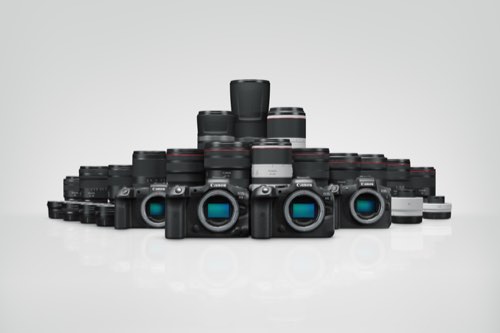This series of articles aims to test the capabilities of the EOS 5DS by photographing a wide variety of subjects, including those in portraits and stills. In this third part, I will examine the low-pass filter effect of the EOS 5DS by comparing its resolving power with that of the EOS 5DS R. To do so, I took two identical shots using the two cameras, with the low-pass filter effect applied on the EOS 5DS but cancelled on the EOS 5DS R. (Edited by: COMMERCIAL PHOTO)

Resolving power of the EOS 5DS is close to that of the EOS 5DS R
One of the roles of the low-pass filter in a digital camera is to reduce false colour and moiré patterns. However, doing so may also lower the apparent resolution at the same time. For this reason, we are beginning to see the appearance of some cameras that place priority on the apparent resolution by omitting the low-pass filter. While Canon has always maintained its stance that a low-pass filter is necessary, it seems like more users are hoping for a camera without a low-pass filter. These circumstances are probably the reasons behind the release of the EOS 5DS R in addition to the EOS 5DS. That being said, note that the low-pass filter is not physically removed from the EOS 5DS R but rather, has its effect cancelled.
So, to what extent is the image quality different between these two models? Frankly speaking, I could not tell any difference under normal circumstances. Here, I tested their difference in greater detail by attaching the EF16-35mm f/4L IS USM, which has a high resolving power.
EOS 5DS

EOS 5DS/ EF16-35mm f/4L IS USM/ Manual (f/11, 1/125 sec.)/ ISO 100/ WB: 5500K/ Picture Style: Fine Detail (Photo by: Hirotsugu Komiya Styling by: Futoshi Watanabe & Toshiya Suzuki (Book inc.))
I made a comparison between the image quality of the EOS 5DS and EOS 5DS R by using them to photograph the fine hair of plants, which are prone to colour tint. Compared to the EOS 5DS, the EOS 5DS R is more capable of expressing dimensionality in the fine hair.

EOS 5DS

EOS 5DS R
Enlarging the image on the monitor to a size close to 100% allows us to see some slight differences in the way the fine hair of the plant is expressed by the two cameras. The low-pass filter effect is cancelled on the EOS 5DS R, which makes the apparent resolution of the resulting image slightly higher.
To start with the conclusion, the resolving power of the EOS 5DS R is indeed higher, but the difference is noticeable only when the image is enlarged to a size close to 100% on the monitor. The EOS 5DS R would be a good choice for those who want the one with a higher resolving power, no matter how trivial the difference may be. However, note that the camera will also be subject to a higher risk of false colour and moiré patterns. While it is generally understood that these are less likely to occur when the pixel count is higher, it does not mean that they won't occur at all. These factors should also be taken into consideration when you are making your choice.
Conceptual diagram of low-pass filter

EOS 5DS
- Phase plate
- Infrared-absorbing glass
- Light source
- Low pass filter 1(separetes the subject image horizontally)
- Low pass filter 2(separetes the subject image vertically)

EOS 5DS R
- Infrared-absorbing glass
- Light source
- Low pass filter 1(separetes the subject image vertically)
- Low pass filter 2(The subject image that was split into two is recombined into one)
The EOS 5DS separates light using two low-pass filters. While this helps to reduce false colour and moiré patterns, the resolving power also deteriorates slightly as a result. In comparison, the EOS 5DS R uses a second low-pass filter to recombine light that was separated by the first filter. Doing so cancels the low-pass filter effect.

A monthly photography magazine for photographers and advertising creatives. It also runs a website named "Shuffle", which offers information on equipment, software, techniques and events for professionals in photography and videography.
Published by GENKOSHA Co., Ltd



































